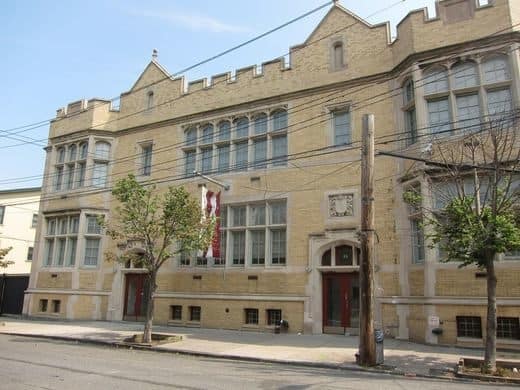The coronavirus has changed everything in New York City. The Red Hook Community Justice Center and the court system are one example.
The city has asked the staff at the Red Hook Community Justice Center to vacate their building at 88 Visitation Place, which it will utilize for emergency court operations, according to Red Hook Community Justice Center Project Director Amanda Berman.
During this time, arrestees with COVID-19 or flu-like symptoms in New York City will be taken to the Midtown Community Court or to Red Hook to be arraigned by video link.
According to Colby Hamilton, the Chief of Public Affairs in the Mayor’s Office of Criminal Justice, the State Courts forbid those who show symptoms or anyone exposed from entering typical court facilities. The Red Hook and Midtown locations will serve as precinct, central booking and arraignment court in these cases.
Only a small percentage of those who are brought in will move into custody. This is partly due to the bail reform laws.
“I imagine [the number] will be smaller than normal, but it is a case-by-case decision for the judges,” Hamilton said.
The New York City Department of Correction (DOC) has a screening process, and if someone is clearly ill, they will be taken to a medical facility. They will not be brought into Rikers Island.
“The people at the Red Hook Justice Center are there because they are either symptomatic or they meet one of the conditions of potentially being exposed,” Hamilton said. Those who display symptoms will receive a health screening and will be referred to appropriate treatment. However, COVID-19 testing is not being done on-site at ambulatory precincts.
The goal of the ambulatory precincts is to reduce to an absolute minimum the number of coronavirus carriers taken into custody, Hamilton explained. Those who are released from the Red Hook Community Justice Center or the Midtown Court will be provided transportation back to where they live.
The Red Hook Community Justice Center wants neighborhood residents to know that its staff is still available remotely to support community members through their various programs and services.
Below is a contact list with important phone numbers related to how the Justice Center and other offices can give help.
Defense Attorneys:
Legal Aid Society – 718-237-2000
Brooklyn Defender Services – 917-426-5616
Other agencies:
Clerk’s office – 718-923-8270
District Attorney’s Office – 718-250-2001 or 718-250-4782
Justice Center program staff:
Community Service and Social Services – 347-813-0318 or 917-860-7494
GED (Pathways to Graduation) – 718-208-7324
Housing Resource Center: 347-216-5738 or joyr@nycourts.gov or emcgoldrick@nycourts.gov
Neighborhood Safety Initiatives and MAP – 917-971-6355
Peacemaking – 917-319-0121
Red Hook CARES (victim services) – 646-573-4665
Youth Programs / AmeriCorps – 929-277-8554









